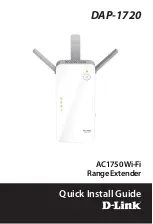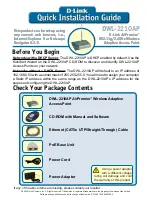
94
7.4 Telephone Calls
To make a call, simply dial the number. The dial plan (i.e. the dialed digits) is
normally customized for each installation. The default dial plan allows for dialing of
4-digit extensions or direct IP addresses. For shorter extension numbers (e.g.
3-digits) adding a “#” at the end.
When a Call Server (SIP Proxy Server) is configured into the system, the dialed
digits are translated and routed by the Call Server to the correct destination as
registered with the Call Server.
If no Call Server is configured, calls can still be made using 4-digit extensions,
rather than using full IP addresses. The originator translates the dialed-digits to a
destination device as follows:
First Digit: Line identifier (for multi-line gateways)
Remaining digits: Host number part of an IP address. The Network number part
is considered to be the same as the caller’s IP address.
For example, if a caller at address 10.136.64.33/24 dials “2023”, the call will be
placed to the second line at address 10.136.64.23. All devices have to be on the
same Class C subnet (24-bit subnet mask).
To dial an IP address directly, dial the IP address digits using * on the keypad as the
dot. Complete the address with a final * or #. When using IP address dialing it is not
possible to specify which line at a gateway is called, so the gateway always routes
IP-address dialed calls to the first line.
Network busy tone (fast busy) will be played for unknown or unreachable
destinations. To answer a call, pick up the phone or press the hands free button.
Caller ID
The Call Manager delivers Calling Number when placing calls. The calling number is
transmitted to the analog line for CLASS recognition.
Call Hold
To put a call on hold, press flash then hang up (optional). To return to the original
call, press flash or pick up the phone. The phone will issue a short ring burst every
30 seconds or so while on-hook to remind you that a call is on hold.
Call Transfer
To transfer a call, press flash then dial the new number.
To transfer immediately, hang up (blind transfer).
To transfer with consultation, wait for the party to answer, consult, and hang up.
To abort the transfer (if the third party does not answer); press flash to return to
the original call.
Conference Calling
To turn a two-party call into a three-party conference call, press flash and dial the
third party. Wait for the party to answer, then press flash. To drop the third party and
return to a two-party call, press flash again. To drop yourself out of the conference,
hang up. The call will be transferred (so that the other two parties remain connected
to each other). In conference mode, the conference initiator performs the audio
bridge/mixing function – there are only two voice streams established.
Содержание VG-8050
Страница 1: ...VG 8050 Wireless Router Access Point User Manual Version 1 1 January 12 2013 261097 011 ...
Страница 7: ...6 1 2 Application The following diagram depicts the application of the VG 8050 ...
Страница 16: ...15 ...
Страница 30: ...29 5 3 1 IPv6 Autoconfig ...
Страница 45: ...44 A maximum of 100 entries can be added to the URL Filter list ...
Страница 52: ...51 5 9 UPnP Select the checkbox provided and click Apply Save to enable UPnP protocol ...
Страница 64: ...63 Enter a certificate name and click Apply to import the CA certificate ...
Страница 86: ...85 7 1 SIP Basic Setting 7 1 1 Global Parameters A common parameter setting ...
Страница 87: ...86 7 1 2 Service Provider This screen contains basic SIP configuration settings ...
Страница 90: ...89 7 2 2 Service Provider Configure your settings based on your service provider ...
Страница 118: ...117 ...
Страница 119: ...118 Step 3 When the screen refreshes click the ConfigAP button ...
Страница 120: ...119 Step 4 Open the Network folder in Vista and look for the BroadcomAP icon ...
Страница 124: ...123 To add a WAN connection go to G2 WAN Connections ...
















































